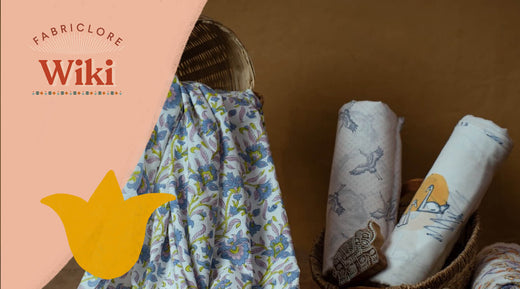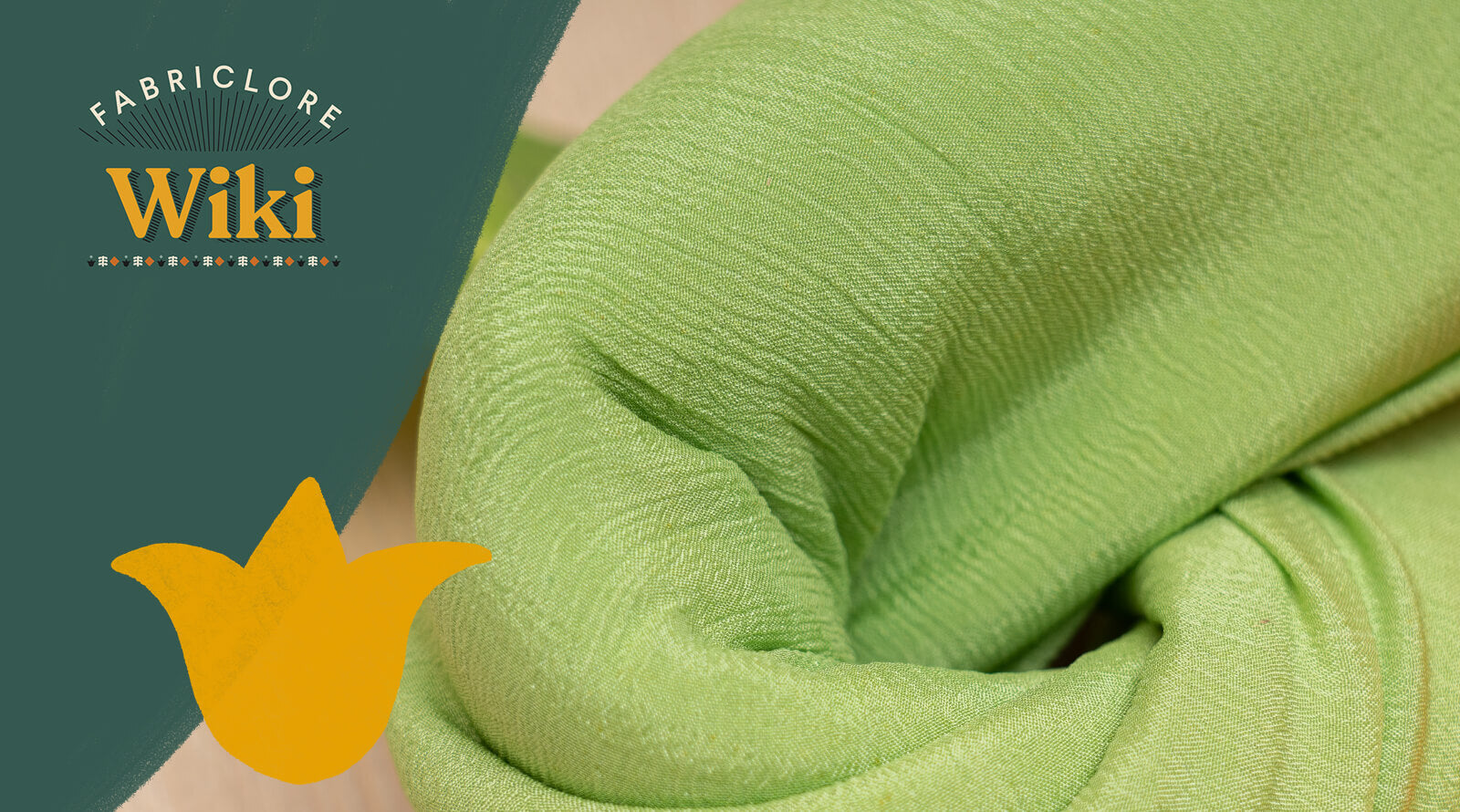Introduction to Cotton Fabric
- Cotton is a pillar of the world's textile industry and is used in almost every part of daily life.
- this fabric is used globally and is produced from cotton plants.
- To create a durable fabric, cotton fibers are spun into yarn and then woven into cloth.
- Cotton is grown in tropical and subtropical regions around the world.
- The fabric is known for its ability to absorb and hold moisture for longer periods, helping to keep the body cool.
- Different types of cotton fabrics include short-staple cotton, Pima cotton, and Egyptian cotton.
- Cotton’s unique combination of breathability and durability has made it an irreplaceable material in industries such as fashion and healthcare.

The History of Cotton
- Cotton has a long history that began thousands of years ago in ancient civilizations in the Americas, Egypt, and India.
- Archaeological findings show cotton fabrics were used as early as 5000 BCE in the Indus Valley.
- Cotton changed over time, impacting trade and economies, from a luxury good to a worldwide commodity.
- The Industrial Revolution saw cotton playing a major role in shaping international trade routes.
- Eli Whitney's development of the cotton gin in 1793 transformed the way cotton was processed, significantly boosting output and securing cotton's position as the most popular fabric in the world.
What is Cotton Fabric?
- Cotton fabric begins as a natural fiber that grows around the seeds of cotton plants.
- The fibers are tube shaped and twist into a flat form as they dry.
- This natural twist makes the fibers ideal for spinning into yarn.
-
The tube like structure of the fibers allows the cotton fabric to be breathable and effective at absorbing moisture.

Types of Cotton Fabrics:
|
Category |
Type of Cotton |
Description |
|
Woven Cotton Fabrics |
Known for its tough twill weave, widely used in workwear and fashion. |
|
|
A lightweight, plain woven fabric often used for draping or testing garment patterns. |
||
|
A durable fabric with a crisp feel and fine ribbed texture, often used in formal wear. |
||
|
A heavy-duty fabric with a plain weave, ideal for applications requiring strength and durability. |
||
|
Cotton Varieties |
Features extra long staple fibers, resulting in a soft and strong fabric often used in luxury products. |
|
|
Pima Cotton |
A premium variety is grown in the U.S., known for its softness and strength, similar to Egyptian cotton. |
|
|
Cultivated without synthetic pesticides or fertilizers, making it a more environmentally friendly option. |
||
|
Standard Upland Cotton |
The most commonly grown and used cotton variety worldwide, known for its versatility. |
Different types of Cotton Weaves:
|
Weave type |
Description |
Common Uses |
|
The simplest and most common weave is created by interlacing yarns in an over under pattern. Results in a stable, durable fabric. |
Basic fabrics like cotton sheets, muslin |
|
|
Characterized by its diagonal pattern, providing stronger fabrics with superior durability and wrinkle resistance. |
Denim, chinos, gabardine |
|
|
Creates a smooth, lustrous surface by floating yarns over several others before interlacing, producing elegant fabrics. |
Formal wear, evening gowns, luxury fabrics |
|
|
Jersey Knit |
A knitted structure offering natural stretch and comfort, commonly used in t-shirts and casual wear. |
T-shirts, casual wear |
|
Specialized Weaves |
Includes dobby, jacquard and Oxford weaves each offering unique textures and properties for specific applications. |
Decorative fabrics, upholstery, shirts |
The Cotton Growing Process:
|
Cotton Growing Conditions |
Details |
|
Temperature |
Warm temperatures between 70-85°F (21-29°C) |
|
Frost-Free Days |
At least 180 frost-free days per year |
|
Rainfall |
Minimum 20-30 inches of annual rainfall or irrigation |
|
Soil Type |
Well-drained, nutrient rich soil |
Growing stages of Cotton:
|
Cotton Growing Stages |
Duration |
|
Planting and Emergence |
5-10 days |
|
Leaf and Stem Development |
30-40 days |
|
Flowering and Boll Formation |
50-70 days |
|
Boll Opening and Fiber Development |
25-30 days |
Manufacturing Process of Cotton Fabric
This table summarizes the cotton fabric manufacturing processes:
|
Process |
Description |
|
The Harvesting and Cleaning Process |
|
|
The Carding and Combing Process |
|
|
The Spinning Process |
|
|
The Weaving Process |
|
|
The Finishing Process |
|
|
The Product Makeup Process for Bedding and Towels |
|
Features of Cotton Fabric
- This fabric is naturally so soft that providing comfort for the skin.
- It is so breathable and good for air circulation.
- It can absorb up to 27 times its weight in water.
- The fabric is durable and is strong when dry and even stronger when wet.
- It is easily printable and dyeable.

How is the cotton fabric used?
Cotton fabric is used in many different ways across various industries. It offers comfort, durability and versatility. You can use cotton fabric in different industries:
|
Woven Fabrics |
|
Industry application |
|
1. Denim: T-shirts, jeans, jackets 2. Flannel: Shirts, pajamas, blankets 3. Canvas: Bags, shoes, tents |
|
Clothing 1. Everyday clothing: T-shirts, dresses, sweatshirts |
|
Home Furnishing 1. Bedding: Bed sheets, pillowcases 2. Rugs: Floor coverings, area rugs 3. Curtains: Window treatments, drapes |
|
Cotton seed 1. Candles: Made from cottonseed wax 2. Make-up: Cotton-seed oil used in cosmetics 3. Soap: Soap made with cotton-seed oil |
|
Food 1. Cotton-seed oil: Used in salad dressings and cooking |
|
Home Goods 1. Bath items: Towels, washcloths, bathrobes 2. Kitchen textiles: Dishcloths, aprons, tablecloths 3. Upholstery: Furniture covers, decorative items |
|
Medical and Industrial Use 1. Medical supplies: Gauze, bandages, surgical supplies 2. Laboratory use: Clean room garments, equipment covers 3. Industrial applications: Filters, belts, protective gear |
Advantages of Cotton Fabric
- This fabric is biodegradable and naturally decomposes without leaving harmful materials.
- It is a renewable resource, as new crops can be planted annually.
- Organic cotton fabric offers sustainable options, helping to reduce the environmental impact.
- It has hypoallergenic properties, making it ideal for sensitive skin.
- It helps regulate temperature by keeping the body cool in summer and warm in winter.
- It excels at moisture management, with excellent absorption and quick drying capabilities.
- It is easy to dye and print, offering great versatility in design.
- This is suitable for various weaving and knitting techniques.
- It blends well with other fibers, enhancing its versatility.
Disadvantages of Cotton Fabric
- This is prone to wrinkling and requires regular ironing to maintain a neat appearance.
- It can shrink up to 3%, even in pre shrunk fabrics.
- Cotton may experience color fading and lose its vibrancy.
- Cultivation consumes a large amount of water, raising environmental concerns.
- Conventional cotton farming involves pesticide use, which can harm the environment.
- The processing of cotton has a large carbon footprint, contributing to environmental impact.
- It has limited natural stretch, which can affect comfort and fit.
- It is a relatively slow drying time compared to other fabrics.
- Cotton can become heavy when wet, making it less ideal for some uses.
Care and Maintenance of Cotton Fabric
- You can wash the cotton with warm or cold water and keep the colors separate if the color is different.
- Use mild detergents and avoid overloading the washing machine.
- Pre-treat stains and rinse with cold water before washing.
- Store cotton in a cool, dry place, away from sunlight.
- Use fabric softeners for wrinkles if needed.
- Check care labels and inspect for moth damage.
- Protect clothes by storing them in airtight containers.
Sustainability and Environmental Impact of Cotton Fabric
- Organic cotton eliminates harmful pesticides and fertilizers.
- It helps improve soil health and reduce water pollution.
- More people are choosing sustainable products, even though they cost more.
- Traditional cotton farming uses a lot of insecticides and water.
- This harms the soil and pollutes the environment.
- New methods like drought resistant cotton and better irrigation are making farming more sustainable.
- Recycling cotton also helps reduce its environmental impact.
The Role of Cotton in Global Economics
- The global cotton market is projected to grow from US$ 41.83 billion in 2023 to US$ 53.64 billion by 2032, with a CAGR of 2.80%.
- Cotton employs over 250 million people and is a key export for developing countries.
- China is the top producer, while India has the largest growing area.
- The U.S. leads in cotton exports and Brazil’s industry is expanding.
- Demand for sustainable cotton is rising, though it faces competition from synthetic fibers.
- Automation is increasing in production and rising labor costs are impacting the industry.
Conclusion
Cotton fabric combines tradition with innovation, remaining essential in our lives. Its journey from field to fabric reflects a balance of nature, technology, sustainability and economics. As we move toward an eco-conscious future, cotton adapts to new needs while maintaining its status as the most versatile natural fiber. Its future depends on sustainable practices, technological advances, and competitiveness with synthetics. With ongoing improvements in farming, processing, and applications, cotton will continue to thrive and evolve to meet future challenges and opportunities.



